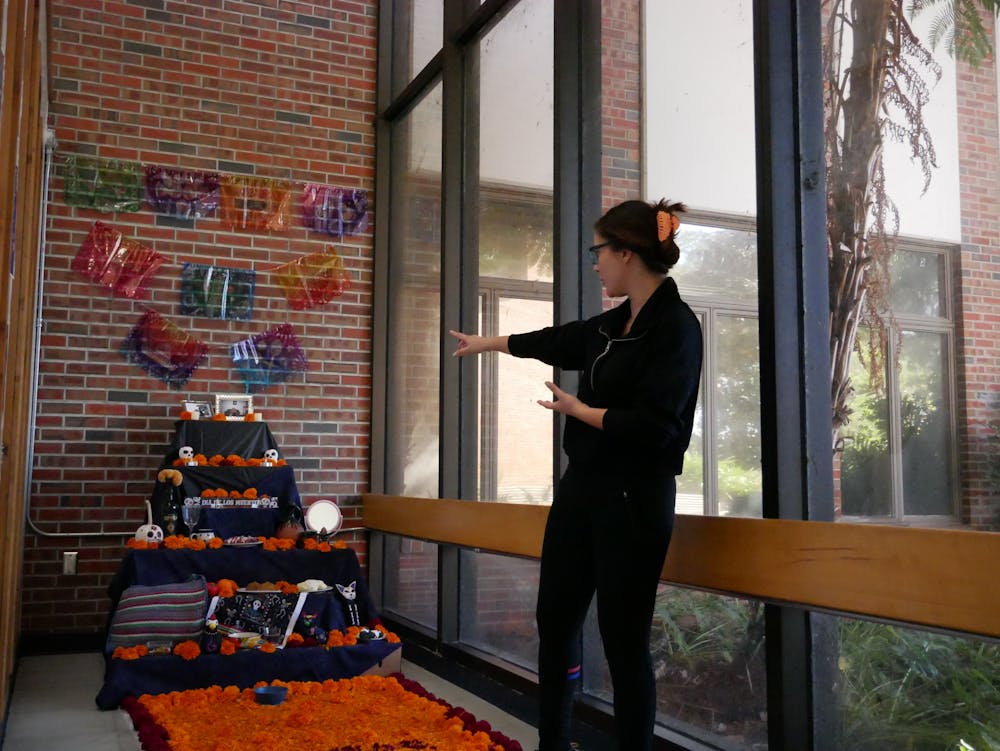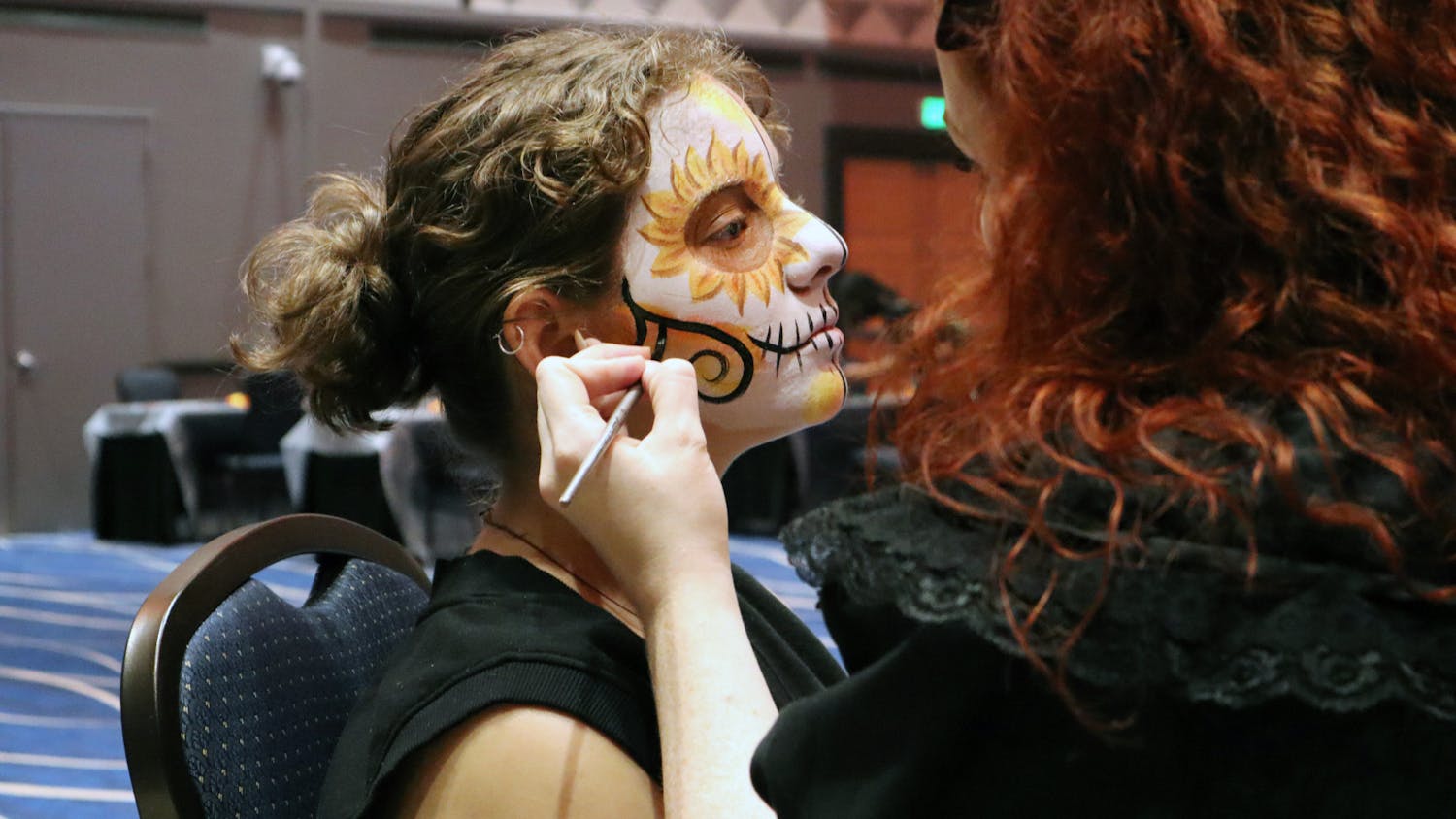Hidden next to the entrance of Fifield Hall, a carpet of orange marigold petals ringed with burgundy celosias led up to a seven-tiered altar decorated with plated food offerings, colorfully painted skulls, glasses of water and photos of passed family members.
Making an ofrenda [offering], like the one built by Mexican graduate students at the UF IFAS horticultural sciences lab, is a tradition typical of Dia de Los Muertos, celebrated on Nov. 1 and 2. The offering was erected Oct. 30 and remained through Nov. 2.
Martín Zapién, a Mexican PhD research assistant in horticultural sciences and coordinator for the ofrenda, created this because of the strong connection between this cultural tradition and agriculture. The celosias and marigolds used in the offering, grown in the UF teaching garden, have incredible significance for the Dia de Los Muertos due to their characteristic smell.
“Our ancestors believed that fragrance helps our ancestors in the other world arrive at the ofrenda,” Zapién said. “We use these petals from these flowers to make a pathway. And that pathway signifies the route they have to follow as they are crossing over to the world of the living.”
Once ancestors arrive at the altar, they can find incense to purify the souls of the dead, candles to serve as symbols of love and salt to stop souls from being corrupted by earthly temptations. On the lower levels, plates of favorite foods and glasses of water are offered to provide nourishment for family members visiting.
During the assembly of the altar, the creators’ traditions from different regions of Mexico contributed to the significance of the project as a whole.
“We are all from different regions,” Tavares added. “Thanks to that, we have a more complete representation of what it means to have an altar de muertos.”
Dia de los Muertos stems from Aztec cultural traditions meant to show reverence for deceased family members. While some may see death as having a negative connotation, the outlook with these traditions is distinctly positive or satirical, said Estefania Tavares, another Mexican PhD research assistant in horticultural sciences who worked to put the ofrenda together.
“We don't really have a bad perspective of the dead,” Tavares said. “It has a positive significance. It's not about fearing the dead, we are all going through that path at some point. I found that very beautiful from these traditions because it's not about fearing the ultimate destination.”
This positive attitude is demonstrated through the practices of creating colorfully painted skulls, called Catrinas, in a satirical or funny way, as well as making Calaveras, which are poems with a humorous or mocking tone. Both of these traditional elements were present at the ofrenda at Fifield.
To combat any popular misunderstandings about this tradition, papers were taped to the wall next to the ofrenda, which provided information on the significance of each element placed on the altar, including the shape, flowers and colors used.
“UF is a hugely diverse university, so we didn’t want to hurt any sensitivities,” Zapién said. “It was to show people the significance of agriculture, the use of flowers in our case, in certain traditions. Hopefully, that opens a new door to celebrate other traditions from other parts of the world regarding agriculture.”
Tavares agreed and hoped that this project could open the door to celebrating cultural traditions from around the world that are connected with agricultural activities.
“We have some colleagues from Brazil, and they have this big tradition during June called Harvest June [Festa Junina], where everything is about corn,” Tavares said. “We are hoping that we’re starting a new tradition with this, thinking about agriculture and how this has impacted traditions in every civilization or society.”
Contact Eluney Gonzalez at editor@alligator.org. Follow him on Twitter @Eluney_G.






